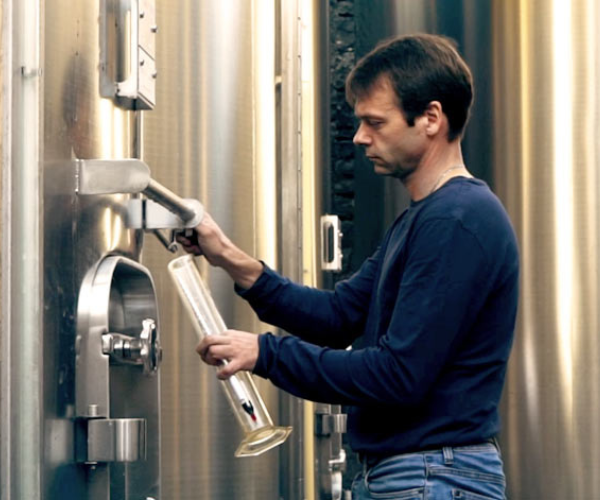

A Cognac Deep Dive – The 6 Cru’s
WEDNESDAY 22ND MAY 2024 | BY SAM WILSON, SOHO STORE MANAGER
Cognac is a type of brandy that originates from the Cognac region in the South West of France. It is made specifically from white grapes, predominantly Ugni Blanc, but also Folle Blanche and Colombard. It must be twice distilled in copper pot stills and aged in French oak for at least two years.
Spanning a vast expanse, Cognac stands as the second-largest grape-growing region in France, boasting 79,000 hectares under vine, second only to Bordeaux. The meticulous documentation of Cognac's terroir owes much to Henri Coquand, a pioneering geology professor of the 1850s. Over a decade, Coquand surveyed and mapped the region's soil types, collaborating with an oenologist to define boundaries and assess wine quality. Prior to Coquand's endeavours, the classification of regions relied heavily on merchant pricing, particularly by British merchants.
The term 'Cru' refers to a vine-growing area and delineates a significant portion of vineyard territory in France. In Cognac, there are six designated Crus, exclusive regions where grapes are cultivated for the production of Cognac. This classification system is legally enforced, ensuring that only grapes from these Crus can bear the esteemed title of Cognac.
Originally, there were 16 Crus, a number later reduced to 8 before the final establishment of the current six Crus. The formal recognition of these six Crus occurred in 1909, preceding Cognac's attainment of AOC (Appellation d'Origine Contrôlée) status in 1936. Below we map out each Cru separately, looking at their soil types, prestige and most importantly ageing and tasting profiles.
WHERE DOES CHAMPAGNE COME INTO IT?
The use of the term Champagne can often cause confusion, but in fact harks back to the original meaning of the word – ‘open country’, a place of gently rolling and pastoral landscapes.
This is something that the area of Cognac shares with its sparkling namesake 310 miles to the northeast.


THE SIX CRUS OF COGNAC
Grande Champagne
Accounts for 17% of Cognac production.
Grande Champagne is the equivalent of a premier cru in Cognac. Located centrally, Grande Champagne features limestone-rich soil with excellent drainage. The exceptional drainage is just as important as the soil type itself, setting this Cru apart from the rest. This geological composition influences the flavour profile of the Cognac, contributing to ethereal floral aromas and intricate fruit layers. Due to its superior terroir, Grande Champagne holds the highest prestige among the Crus and commands premium prices. Additionally, the soil's characteristics allow for extended ageing potential, resulting in Cognacs of remarkable complexity and finesse.
Cognac to try:
Petite Champagne
Accounts for 22% of Cognac production.
As the name suggests Petite Champagne, whilst responsible for producing very high-quality brandies, is not quite at the same quality level as the Grande Champagne area. Adjacent to Grande Champagne, the area shares similar limestone foundations but with a higher clay content. This soil composition imparts a balanced flavour profile characterized by delicate floral notes, spice hints, and citrus undertones. While slightly less renowned than Grande Champagne, Petite Champagne offers sophistication and charm at a relatively lower price point. Despite this, Cognacs from Petite Champagne possess aging potential and flavour intricacies comparable to its grand counterpart. Something else to note: Fine Champagne is another denomination, which is defined by the eaux-de-vie of at least 51% being made up of Grande Champagne and the rest Petite Champagne.
Cognac to try:
Fins Bois
Accounts for 43% of Cognac production.
Fins Bois is by some margin the largest of the Cognac areas, covering 580,000 acres. Whilst only 15% of that is put towards vineyard use, it produces three times more liquid than the next biggest cru of Petite Champagne. Stretching from the central region, Fins Bois features diverse soil types including clay, chalk, and sand. This versatile terroir fosters Cognacs known for robust flavours and expressiveness. With vibrant fruitiness and warm undertones, Fins Bois Cognacs offer a friendly drinking experience. Although lacking the prestige of other Crus, Fins Bois Cognacs are accessible and affordable, with moderate ageing potential.
Cognac to try:
Borderies
Accounts for 5% of Cognac production.
Distinguished by rare clay and flint soil, Borderies stands out within the Cognac landscape. This terroir contributes to a rich texture and imparts aromas of violet, iris, and exotic spices to Borderies Cognacs. Despite its smaller size, Borderies holds considerable prestige among enthusiasts, commanding premium prices for its unique flavour profile. Cognacs from Borderies reflect exceptional quality and limited production. They are also known for having the shortest aging profile, with ages above 30 years being rare.
Cognac to try:
Bons Bois
Accounts for 12% of Cognac production.
Located further into the outskirts, Bons Bois boasts sandy soils that contribute to its distinctive lightness and vivacity. Bons Bois Cognacs exhibit youthful fruit flavours with subtle floral undertones, making them suitable for casual consumption. While less renowned, Bons Bois Cognacs offer freshness and vibrancy at budget-friendly prices. Unfortunately though, these are harder to get outside of France.
Bois Ordinaire
Accounts for 1% of Cognac production.
At the outermost fringes of the region, Bois Ordinaire features sandy soils dominating the landscape. Despite its humble reputation, Bois Ordinaire Cognacs are accessible and approachable, with fruit-forward profiles. These Cognacs provide an affordable entry point into the category, suitable for everyday enjoyment.
HOW TO ENJOY COGNAC
Whilst noted for being enjoyed on its own, perhaps even with a cigar, Cognac is often enjoyed in cocktails. Lesser known is that this most elegant of drinks pairs exceptionally well with a variety of food. The saltiness of a parmesan works well with the tannic nature of Cognac. Bayonne ham or a pork rillette work too, brandy cuts through the fatty nature of charcuterie. The same goes for duck in its various forms. Enjoying a slightly chilled Cognac with seafood will also reward you. And obviously not to be overlooked is a little measure to be taken with dark chocolate.


From the illustrious vineyards of Grande Champagne to the rustic charm of Bois Ordinaire, Cognac enthusiasts are treated to a broad scope of flavours and experiences. As we raise our glasses to toast the rich heritage of Cognac, let us savour each sip, knowing that within these cherished Crus lies the essence of centuries-old craftsmanship and unparalleled artistry and history.








